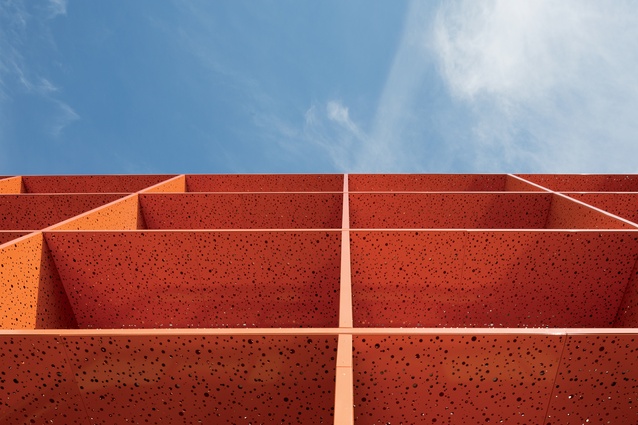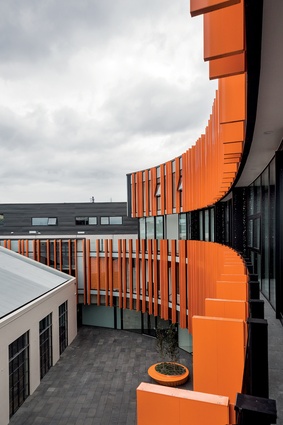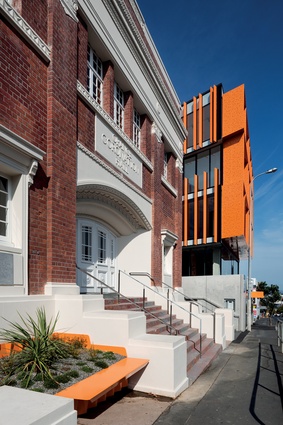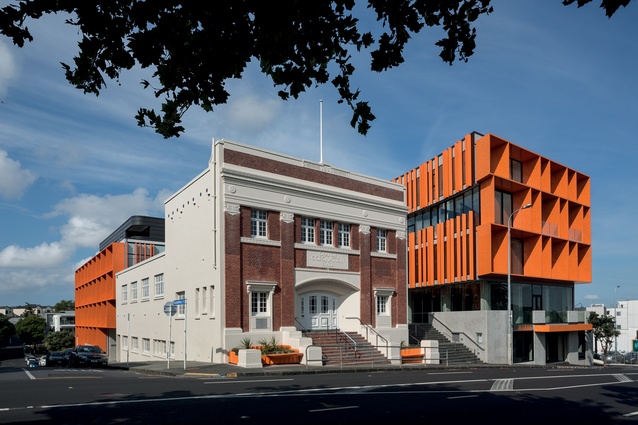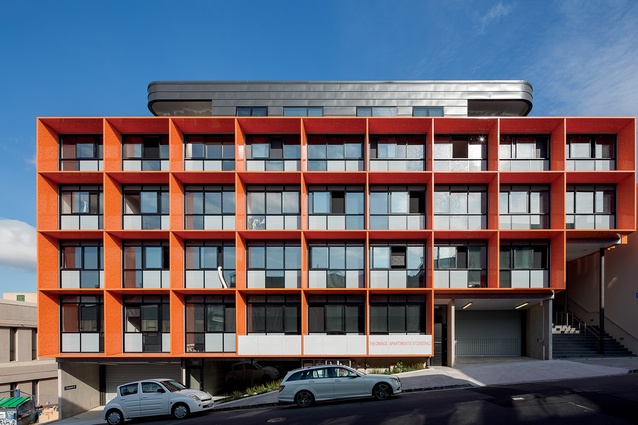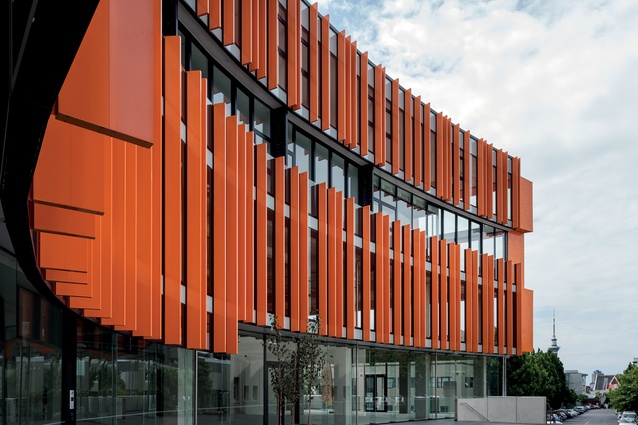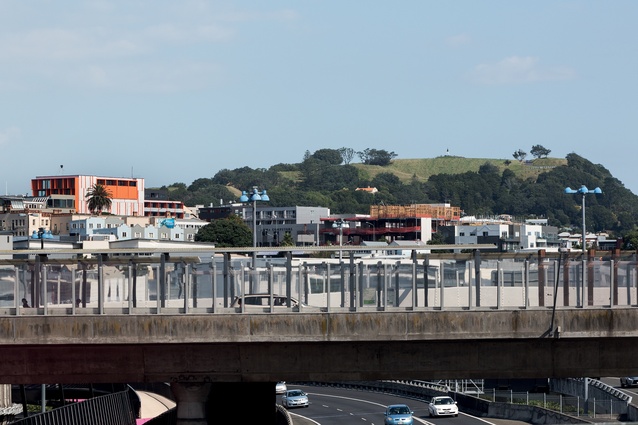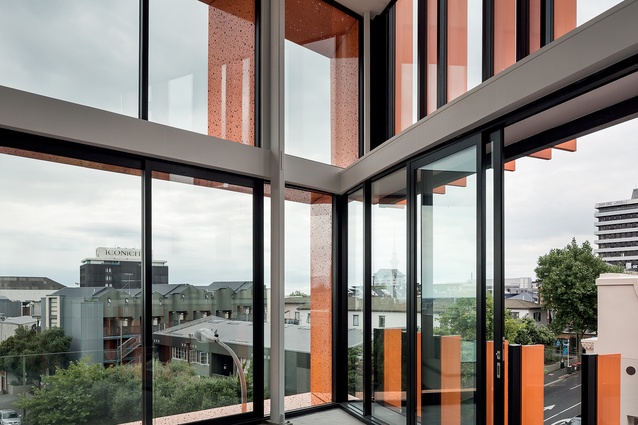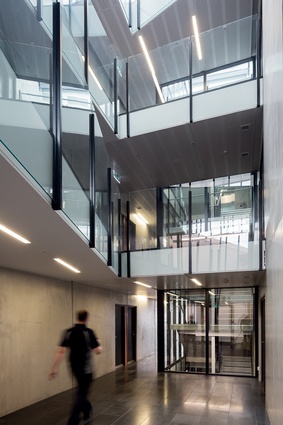Uptown regeneration: The Orange
Auckland’s city fringe has never looked brighter, now with a new vibrant orange multi-use residential building by Crosson Clarke Carnachan Architects in association with Tonkin Zulaikha Greer Architects.
In the UK, a phone company used to promote itself with the slogan ‘the future is bright, the future is orange’. In Auckland, orange may indeed be heralding in a more colourful future for the city’s architecture. So far, there’s a hot-pink cycle bridge and, now, a tangerine-orange-coloured mixed-use development has arisen in the city-fringe suburb of Newton. Also, there are other new apartment developments popping up all over the fringes, changing the character of the city, hopefully for the better.
On Newton Road, facing the length of St Benedict’s Street, the former Orange Coronation Hall was, until recently, the City Christian Church and, before that, it was home of the Performing Arts School. From the 1930s to 1987, at first it was rented out for events, with some of Auckland’s pioneering jazz musicians playing here regularly; then, it became a very well-known social hub, especially for Swing music accompanied by dancing in styles commonly known as Jitterbug and Lindy Hop.
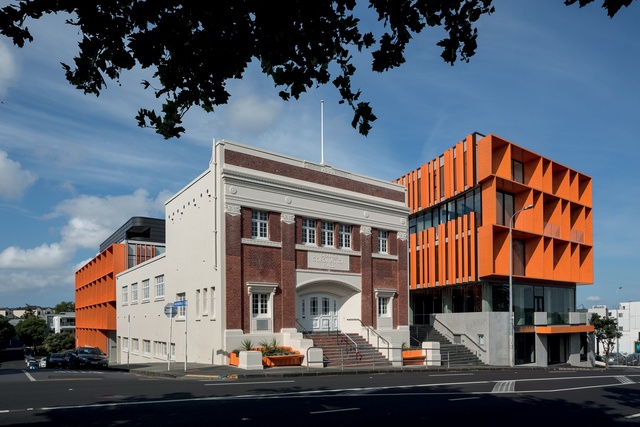
Built in 1922, the Hall was originally designed for the Northern Irish protestant Orange Order, a somewhat controversial organisation to anyone with Southern Irish roots – but, here in New Zealand, the tricky politics has diluted over time and distance, and the Order has long departed the building. The Hall has now been restored back into an events venue, a new commercial and hospitality building is wrapped around its side, and an apartment building has been built in behind fronting onto Dundonald Street.
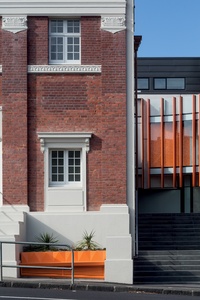
The designers of the scheme, Crosson Clarke Carnahan Architects in association with Tonkin Zulaikha Greer Architects, have embraced the old building’s charms, retaining the original exposed timber ceiling in the main dance hall, which still has a sprung dancefloor; the tightly-contained staircase between the floors; and even several peepholes in the upstairs’ doors.
These are similar to peepholes found in the Masonic Hall, situated about 200m away, along St Benedict’s Street, which was built about the same time. These tiny ‘doors within doors’ are quite a bizarre architectural device, designed to be used for secret codes and handshakes to preclude outsiders; a world in which brotherhoods and, indeed, sisterhoods, led by Grand Masters, feel the need to protect their organisation’s religious or philosophical views. Fortunately the new design is all about inviting the public inside – no secret code required. Going forward, this building will operate as a function centre and café.
The architects have given the Hall a major fireproofing and seismic upgrade, originally responding to the needs of the Royal New Zealand Ballet Company, which was supposed to have inhabited the building as a rehearsal and administrative space but, unfortunately, I’m told, funds were cut. The large dance space has floor-to-ceiling doors opening out into a central courtyard, which would have offered passers-by with some fantastic entertainment – seeing top ballet performers in training.
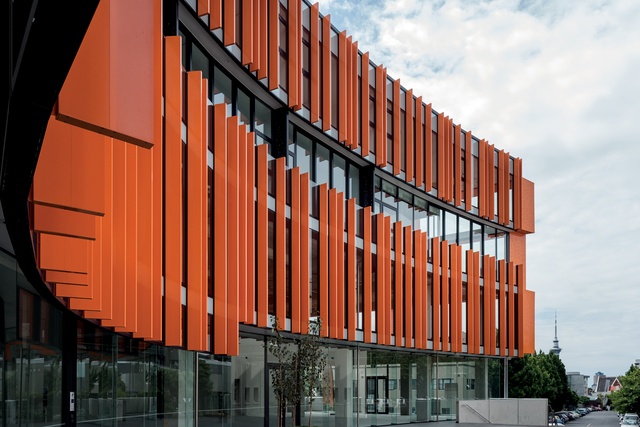
Upstairs, a large industrial-style window has been inserted into a timber-panelled room that looks down over the dance space. You can imagine how this space might exist as an intimate lounge overlooking dancers below. In the basement is a darker space with high windows and lots of columns throughout.
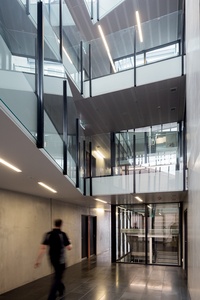
Opposite, the new mixed-use building has hospitality and retail spaces on the lower level; again, these open up into the podium courtyard, which architect Ken Crosson describes as capping off the end of St Benedict’s Street, opening up the westerly face. “We wanted a new building that wrapped around and respected the old building,” he explains. “Conceptually, it is like an orange peel that wraps around; then the publicly-accessible courtyard wraps around the building.” It is quite an unusual solution but the architects were fortunate to have a big site with enough scope to dedicate space to the public as well as to private development.
The street faces of the new building have a rhythm of repeating box forms. This is perforated with the pattern and texture of orange peel, while orange fins provide solar shading along the inverted curve – pulling the whole thing together. Inside and upstairs, double-height mezzanine spaces can be occupied as offices or residencies, offering flexibility into the future. The views out are lovely, the site being high up on the ridge surrounding Auckland’s centre.
The Hall’s ground floor is up on a podium, accessed via a staircase, which meant that the new building needed to sit at the same level. Therefore, it sits on a podium with the leftover bits hunkering into the contours of the land, activating the ground level with retail. A similar staircase to the Hall’s staircase provides access to the courtyard podium – like two grand entrances into the complex.
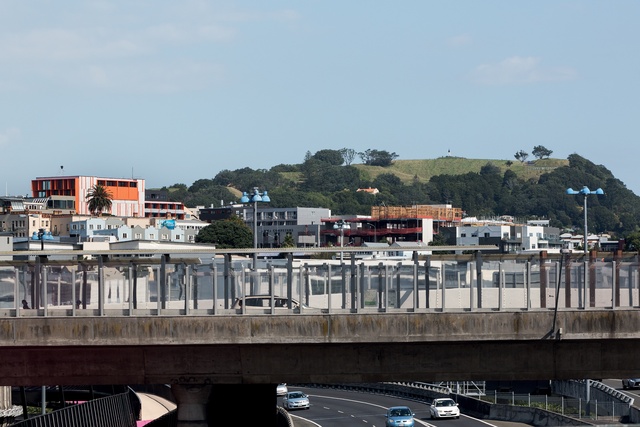
The landscape elements, designed by Wraight + Associates, are inspired by the history of the dancefloor, being both distinctive and fun in sassy orange. Integrated seating and planters, constructed in powder-coated aluminium, sit out front on Newton Road, while, inside the courtyard, a single planter is similarly wrapped but, this time, as if it wears a dancer’s circular tutu skirt: the star of the show, perhaps. The footsteps of a lone dancer appear in the courtyard paving, like the residue of a bygone dance.
Right in behind the old Hall is the new apartment block. Its entry lobby could easily have been dark and dingy but, instead, it’s surprisingly light and welcoming. The architects have maximised the connections between east and west, and brought light, life and interest into the core via a series of bridges that fly across at different positions and allow lightwells to pull in plenty of sunlight. This residential block contains studios, one- and two-bedroomed apartments, and lofts, as well as commercial spaces. Retail activates the building on the lower level, and there is access into the carparking levels, also.
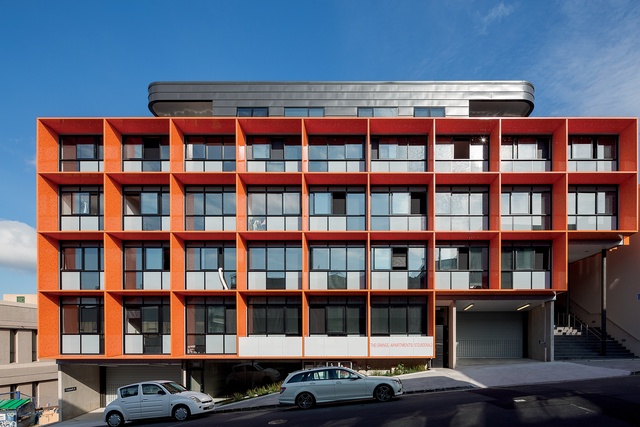
Newton may not be given the City Rail Link station that was proposed to be built in the area [a somewhat short-sighted decision, if you ask me], but this once-tired area has, in recent years, had plenty of new buildings enter the vicinity, creating an eclectic mash-up of architectural styles that makes it more interesting as a place. Yet, it still lacks the street activation needed to make the area truly lively. Hopefully, The Orange will play a part in helping Newton to regain its mojo. “It’s nice to see this part of town getting a bit of a lift because it’s situated so close to the city,” says Crosson.
Once again, The Orange reminds us of what it is to make our communities come alive with dance. Already, there is a strong history of dance in Newton and its neighbouring areas, prevalent today with a handful of mostly-Latin-style dance studios. Given this, it would make total sense for Council to promote Newton as Auckland’s hub of dance and assist these diverse communities with street dance festivals and events that draw in the wider public – achieving Auckland’s strategic directive to ‘integrate the arts and culture into our everyday lives’.

